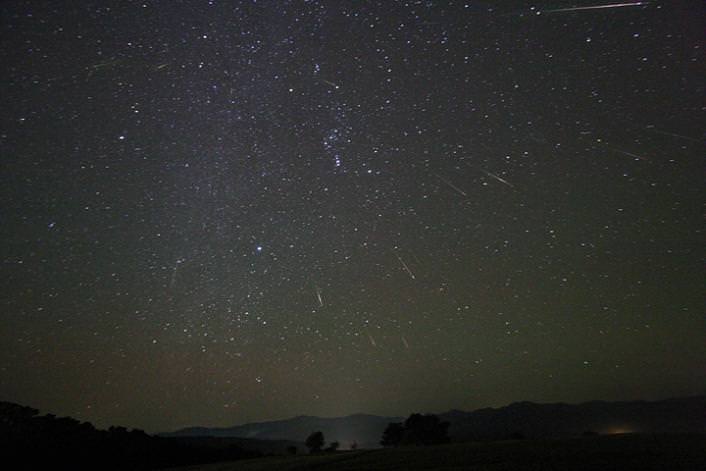[/caption]
Do you hate to get up early? Then stay up late, because it’s infrequent that both the northern and southern hemispheres have a chance to catch an annual meteor shower. Right now the Earth is heading into the complex Orionid stream, and while the skies won’t be perfectly dark, they aren’t going to be bad. Where and when do you watch? Follow me…
As the Earth slowly orbits the Sun, it passes into one of the debris streams left by Comet Halley and the material returns as the Orionid meteor shower. While it won’t be a “meteor storm”, what you can expect to see is one of the most predictable and reliable meteor showers of the year. Even if it’s a few days early (or late), take advantage of any clear skies and begin your observations because activity is up.
The Orionids produce an average of 10-20 meteors per hour maximum, and best activity begins before local midnight on October 20th, and reaches its peak as Orion stands high to the south about two hours before local dawn on October 21st. With only partial slice of Moon in the late evening/early morning, this looks to be the year’s last, best meteor shower!
“Every year around this time Earth glides through a cloud of dusty debris from Halley’s Comet,” explains Bill Cooke of the NASA Marshall Space Flight Center. “Bits of dust, most no larger than grains of sand, disintegrate in Earth’s atmosphere and become shooting stars.”
“It’s not an intense shower,” he says, “but it is a pretty one.”
Although Comet Halley has now departed the inner Solar System, its debris trail remains well organized – allowing us to predict when this meteor shower will occur. The Earth first enters the stream at the beginning of October and does not leave until the beginning of November. This makes your chances of “catching a falling star” above average!
“Earth comes close to the orbit of Halley’s Comet twice a year, once in May and again in October,” explains Don Yeomans, manager of NASA’s Near-Earth Object Program at the Jet Propulsion Laboratory. Orionid meteoroids strike Earth’s atmosphere traveling 66 km/s or 148,000 mph,” he continued. These meteors are very fast, and although faint (average magnitude 3), occasional fireballs do leave persistent trails that shimmer in the upper atmosphere. It’s the “Oooooh!” effect!
For best success, get away from city lights. Face south-southeast in the northern hemisphere and almost overhead in the southern – then relax and enjoy the stars of the Winter Milky Way. The radiant is near Betelguese, but may occur from any part of the sky. When the Moon rises, try positioning yourself so a house, tree, or other obstruction helps to reduce the glare. The meteor watching experience is much more comfortable if you include a reclining lawn chair, blanket, and thermos of your favorite beverage. Nothing spoils watching quicker than “meteor neck”.
Clouded out? Don’t despair. You don’t always need eyes or perfect weather to keep the watch. Tune an FM radio to the lowest frequency that doesn’t receive a clear signal. An outdoor FM antenna pointed to the zenith increases your chances – but isn’t essential. Simply turn up the static and listen. Those hums, whistles, beeps, bongs, and occasional snatches of signals are distant transmissions being reflected off a meteor’s ion trail!


